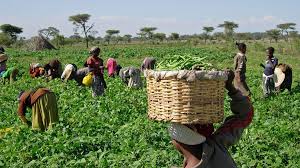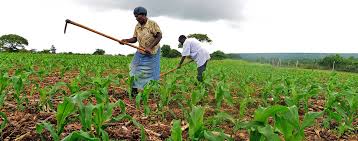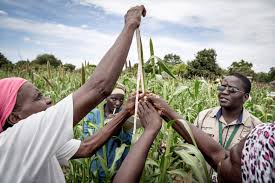In this article, an understanding is provided of the meaning of agricultural production and decision, types of production relationship, meaning of production function, assumption of production function, and types of production function.
Meaning of Production and Decision in Agriculture
Agricultural production is the process of transforming agricultural resources into a form that will give maximum utility. Agricultural production decisions, on the other hand, are decisions taken in the allocation of scarce resources. Agricultural production requires various resources. These resources are scarce and therefore a choice has to be made in their use. One of the production decisions farmers have to make is that of the quantity of a commodity (e.g., maize) that must be produced. Making this decision will lead to knowing the production function.
Factor-Product Relationship in Agriculture
Factor-product relationship describes the transformation of a given product like maize. Here, interest is in the effect of variation of only one input, such as labour or fertilizer, while holding other factors or inputs fixed. Many farm decisions always fall within this frame of reference and are analyzed using this production relationship. The factor-product relationship is important, especially when it involves the problem of determining the intensity with which the given variable input is to be combined with fixed quantities of other essential inputs to achieve the profit maximisation objectives. The factor-product relationship is not true to life since production always involves more than one variable in the short run and all inputs are variable in the long run. It is only used for diagnostic purposes where one basic input is the limiting input (e.g., labour or capital in a developing economy).
The input functional form of the factor-product relationship is stated as
Y = f(X₁, X₂, …, Xₙ), or Y = f(X₁),
where Y = output in specified article,
X₁ = variable input, and
X₂–Xₙ = fixed quantities of the other input.
Read Also: 15 Medicinal Health Benefits Of Aspidosperma quebracho-blanco (Quebracho Blanco)
Factor-Factor Relationship: Production Methods in Agriculture

Another type of production decision farmers have to make is the decision on which method of production to use. This type of decision involves factor-factor relationship and factor substitution. The factor-factor relationship shows the level of choice between different combinations of two or more resources. This level of choice must be such that it is economic for the production of a given output.
In other words, how many tons of fertilizer can be combined with an unknown number of man-days of labour and an unknown capital-input service to yield a certain amount of grain per acre of cultivated land. This relationship is important in attaining the cost minimisation objectives. Substitution of one factor for another in the production process is a familiar practice among farmers. Some farmers produce beef by using more maize and little pasture. Milk can be produced entirely by hand labour or by means of a milk machine with little hand labour. Pigs can be reared with feed concentrates or with carbohydrates such as cassava.
Read Also: 10 Medicinal Health Benefits Of Astrocaryum aculeatissimum (Tucum)
Product-Product Relationship: Enterprise Allocation in Agriculture

This type of relationship tends to establish the most efficient allocation of given resources. This relationship is particularly relevant to the problem of optimum enterprise combination that maximises farm income. It is a relationship involving the production of two different enterprises such as oil palm and rubber with only one variable input such as land and labour. It involves substitution between the two enterprises given the variable input. In other words, to produce more hectares of oil palm with a given amount of land will imply the production of fewer hectares of rubber, and vice versa.
Implicitly, it is defined as:
X = (Y₁, Y₂),
where X = variable input,
Y₁ = Enterprise 1 (oil palm), and
Y₂ = Enterprise 2 (rubber).
Theory of Production Function in Agriculture
Production function is a technical or physical relationship between inputs such as fertilizers, herbicides, land labour, capital, agro-chemicals, etc., and output in any given production process. It shows the rate at which inputs are transformed into output.
Production function reveals the production possibilities open to farmers. The relationship indicates that total output is a function of the quantity and quality of inputs used in the production process.
Any given input–output relationship specifies the quantities and qualities of resources required to produce a given level of output. Implicitly, the production function is defined as
Y = f(x).
It states that output Y is a function of input x, where Y = output of product,
x = input used, and
f = functional form.
Production function can be expressed in different ways.
Do you have any questions, suggestions, or contributions? If so, please feel free to use the comment box below to share your thoughts. We also encourage you to kindly share this information with others who might benefit from it. Since we can’t reach everyone at once, we truly appreciate your help in spreading the word. Thank you so much for your support and for sharing!

